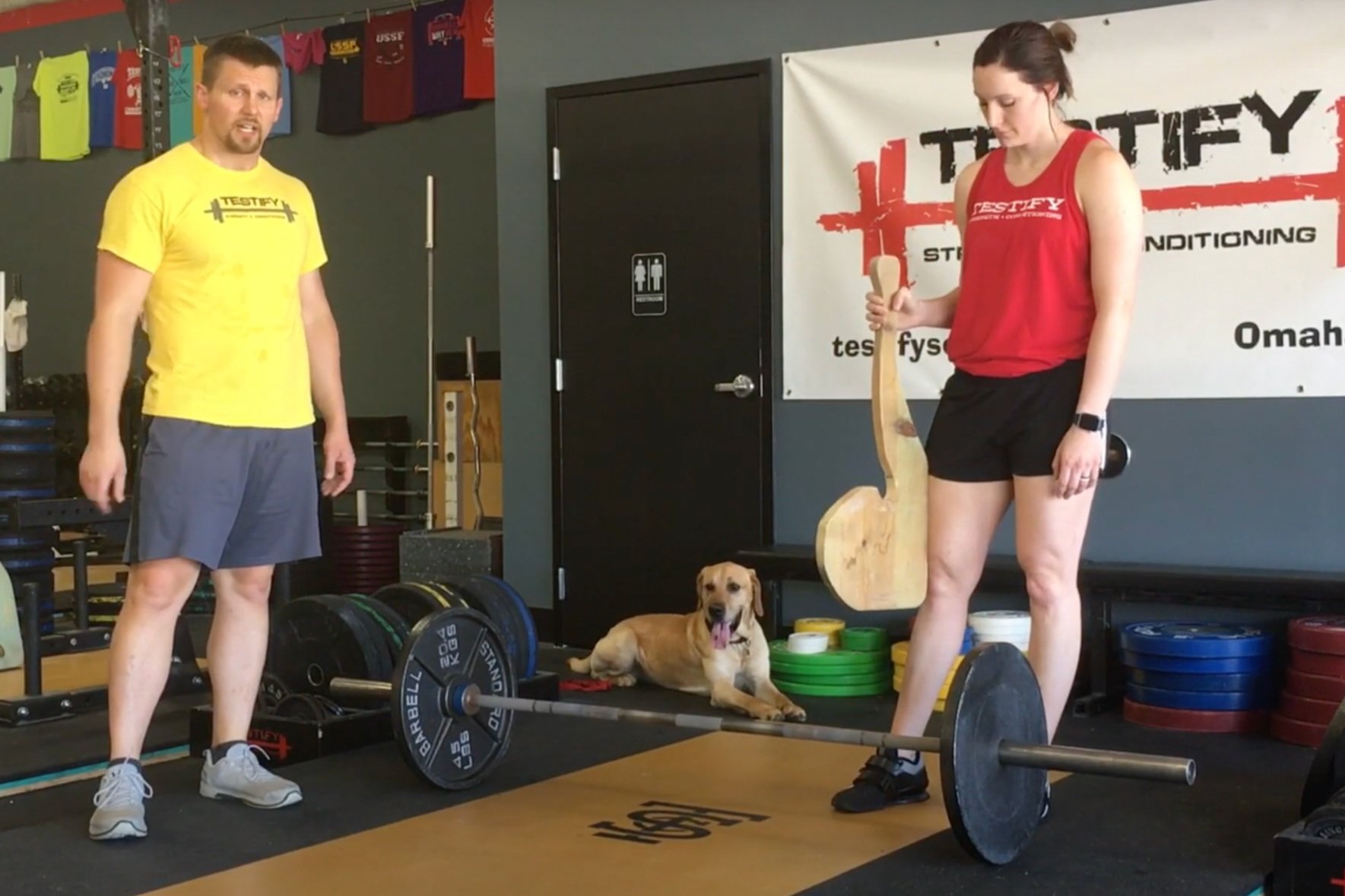Deadlift Fix: 4 Cues for a Stronger, Smoother Pull
/Attempting to jerk or yank the bar off the floor when starting the deadlift is a common problem for new lifters.
Don’t do this.
You might be able to get away with it when the weight is light, but you won’t be able to get away with it when the weight gets heavy, and by that time, you’ll have accidentally ingrained a very counterproductive habit.
In the 5-step setup for the deadlift - stance, grip, shins, chest, pull/drag - this is typically a problem with step 4: squeezing your chest up to set your back in extension. When you lift your chest to set your back, you must start applying tension to the bar – you must start pulling on the bar even though you're not lifting it off the floor just yet. Treat the bar as an anchor against which you start to pull to help you set your back.
Here are 4 cues that you can use to help with this process:
Cue #1: Bend the bar.
When you start applying tension to the bar - when you squeeze your chest up to set your back in extension - picture yourself bending the bar upward in the middle (i.e., make the bar look like a mountain, not a valley). Will it actually bend? That depends on how much weight is on the bar, but you visualize yourself bending it nonetheless.
Cue #2: Bend it before you break it.
Bend the bar before you break it off the floor. Very similar to the first cue, but it reminds you to put a lot of tension on the bar before you decide to break it off the floor.
Plus, it's catchy - this is the “try it before you buy it” cue of the deadlift world.
Figure 1A: Note the dark gap or “slop” between the top of the shaft and the collar.
Cue #3: Pull the slack out of the bar.
Barbells have some slop in them. Take a close look at your barbell and note that there’s a little gap between the shaft of the bar and the collar of the bar (Figure 1A). Set your back hard enough - pull hard enough with long, straight arms - that this slop nearly or completely disappears (Figure 1B).
Figure 1B: Note that the gap has almost disappeared.
Plates (even competition plates to a small degree) also have some slop between themselves and the bar - this is what allows you to slide them on and off. When you walk up to your deadlift, the bar is resting on the plates. When you squeeze your chest up and start to apply tension, pull up hard enough that the plates start to rest or hang on the bar instead.
Cue #4: Pull the click out of the bar.
Same idea as the previous cue, but this emphasizes that you should hear it when you apply tension and pull the slack out of the bar.
Once you’ve applied a significant amount of tension to the bar using one of these cues - and you’ll find one that works best for you - then you squeeze the bar smoothly off the floor.
Remember, breaking the deadlift off the floor isn’t digital - it’s not a switch that you flip from off to on. It’s analog - it’s a dial that you keep turning up and turning up - pulling harder and harder - until the bar starts moving. This is a skill - not a particularly complicated one, but a skill nonetheless - and it’s one that you need to - and can - develop.
We hope these cues help you get stronger and live better!
(Some links may be affiliate links. As an Amazon Associate, Testify earns from qualifying purchases.)













